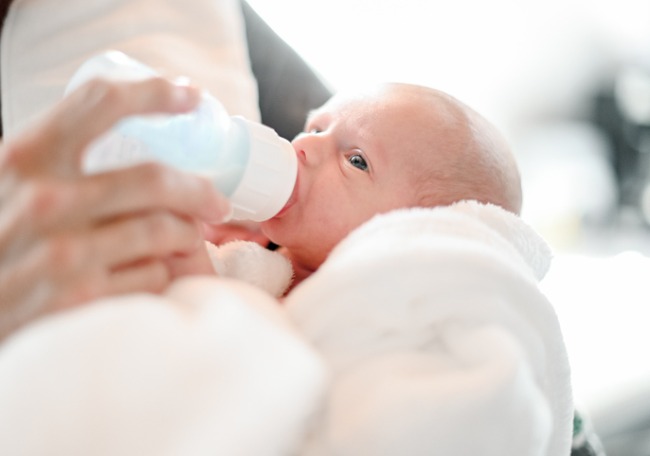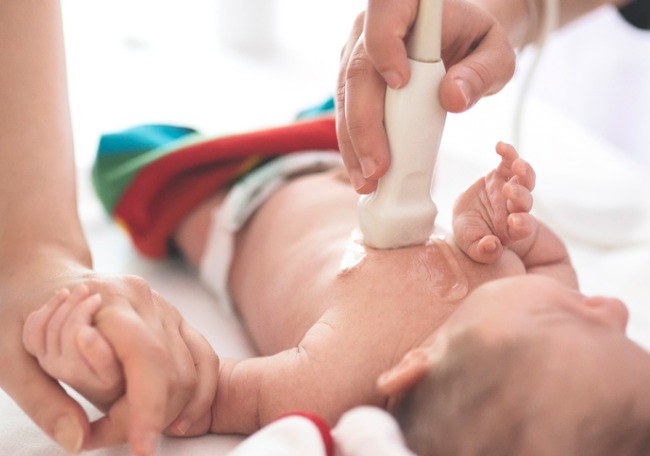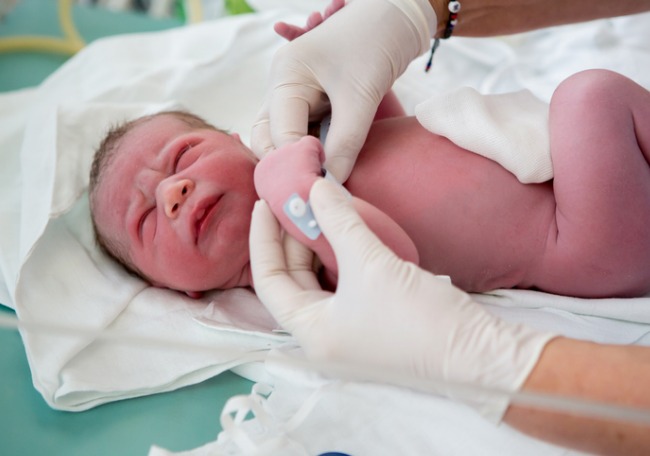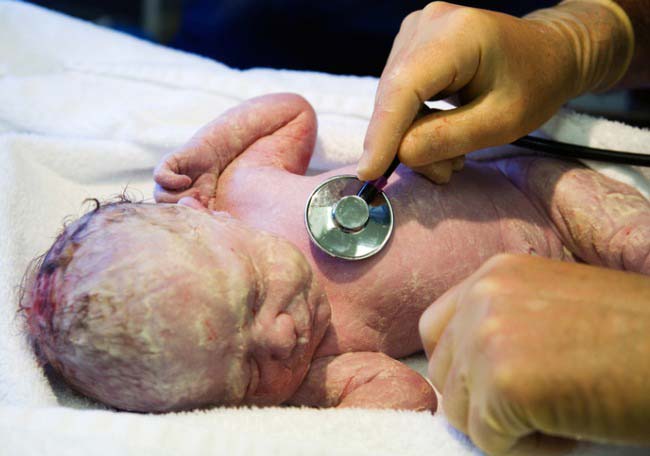Prematuridad y cardiopatía congénita
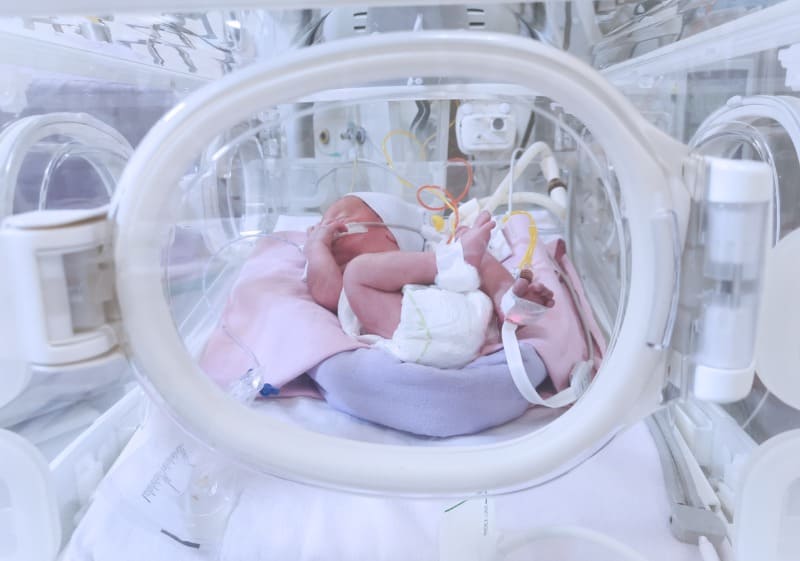
1. Desai J, Aggarwal S, Lipshultz S, et al. Surgical interventions in infants born preterm with congenital heart defects: an analysis of the Kids’ Inpatient Database. J Pediatr. 2017; 191:103–109.e4
2. Oster ME, Lee KA, Honein MA, Riehle-Colarusso T, Shin M, Correa A. Temporal trends in survival among infants with critical congenital heart defects. Pediatrics. 2013;131(5):e1502–e1508
3. Honein MA, Kirby RS, Meyer RE, et al; National Birth Defects Prevention Network. The association between major birth defects and preterm birth. Matern Child Health J. 2009;13(2):164–175
4. Magro Malosso ER, Saccone G, Simonetti B, Squillante M, Berghella V. US trends in abortion and preterm birth. J Matern Fetal Neonatal Table. Med. 2018;31(18):2463–2467
5. Matthiesen NB, Østergaard JR, Hjortdal VE, Henriksen TB. Congenital heart defects and the risk of spontaneous preterm birth. J Pediatr. 2021;229:168–174.e5
6. Krishnamurthy G, Ratner V, Bacha E, Aspelund G. Comorbid conditions in neonates with congenital heart disease. Pediatr Crit Care Med. 2016;17(8 Suppl 1):S367–S376
7. van der Linde D, Konings EE, Slager MA, et al. Birth prevalence of congenital heart disease worldwide: a systematic review and metaanalysis. J Am Coll Cardiol. 2011;58(21):2241–2247
8. Laas E, Lelong N, Thieulin AC, et al; EPICARD Study Group. Preterm birth and congenital heart defects: a population-based study. Pediatrics. 2012;130(4):e829–e837
9. Laas E, Lelong N, Ancel PY, et al; EPICARD study group. Impact of preterm birth on infant mortality for newborns with congenital heart defects: The EPICARD population-based cohort study. BMC Pediatr. 2017;17(1):124
10. Chu PY, Li JS, Kosinski AS, Hornik CP, Hill KD. Congenital heart disease in premature infants 25-32 weeks’ gestational age. J Pediatr. 2017;181:37–41.e1
11. Martin RJ, Fanaroff AA, Walsh MC, eds. Fanaroff and Martin’s Neonatal-Perinatal Medicine, 2-volume set. 11th ed. Philadelphia, PA: Elsevier; 2020
12. Archer JM, Yeager SB, Kenny MJ, Soll RF, Horbar JD. Distribution of and mortality from serious congenital heart disease in very low birth weight infants. Pediatrics. 2011;127(2):293–299
13. Costello JM, Polito A, Brown DW, et al. Birth before 39 weeks’ gestation is associated with worse outcomes in neonates with heart disease. Pediatrics. 2010;126(2):277–284
14. Tanner K, Sabrine N, Wren C. Cardiovascular malformations among preterm infants. Pediatrics. 2005;116(6):e833–e838
15. Lisowski LA, Verheijen PM, Copel JA, et al. Congenital heart disease in pregnancies complicated by maternal diabetes mellitus. An international clinical collaboration, literature review, and metaanalysis. Herz. 2010;35(1):19–26
16. Oster ME, Riehle-Colarusso T, Correa A. An update on cardiovascular malformations in congenital rubella syndrome. Birth Defects Res A Clin Mol Teratol. 2010;88(1):1–8
17. Ott WJ. Reevaluation of the relationship between amniotic fluid volume and perinatal outcome. Am J Obstet Gynecol. 2005;192(6): 1803–1809, discussion 1809
18. Donofrio MT, Moon-Grady AJ, Hornberger LK, et al; American Heart Association Adults With Congenital Heart Disease Joint Committee of the Council on Cardiovascular Disease in the Young and Council on Clinical Cardiology, Council on Cardiovascular Surgery and Anesthesia, and Council on Cardiovascular and Stroke Nursing. Diagnosis and treatment of fetal cardiac disease: a scientific statement from the American Heart Association. Circulation. 2014;129(21):2183–2242
19. Steurer MA, Peyvandi S, Baer RJ, et al. Impaired Fetal environment and gestational age: what is driving mortality in neonates with critical congenital heart disease? J Am Heart Assoc. 2019;8(22):e013194
20. Lutin WA, Brumund MR, Jones C, Tharpe CE, Montegomery M, McCaffrey FM. Hemodynamic abnormalities in fetuses with congenital heart disease. Pediatr Cardiol. 1999;20(6):390–395
21. Costello JM, Pasquali SK, Jacobs JP, et al. Gestational age at birth and outcomes after neonatal cardiac surgery: an analysis of the Society of Thoracic Surgeons Congenital Heart Surgery Database. Circulation. 2014;129(24):2511–2517
22. Cnota JF, Gupta R, Michelfelder EC, Ittenbach RF. Congenital heart disease infant death rates decrease as gestational age advances from 34 to 40 weeks. J Pediatr. 2011;159(5):761–765
23. Young PC, Glasgow TS, Li X, Guest-Warnick G, Stoddard G. Mortality of late-preterm (near-term) newborns in Utah. Pediatrics. 2007;119(3):e659–e665
24. Spong CY, Mercer BM, D’Alton M, Kilpatrick S, Blackwell S, Saade G. Timing of indicated late-preterm and early-term birth. Obstet Gynecol. 2011;118(2 Pt 1):323–333
25. American College of Obstetricians and Gynecologists’ Committee on Obstetric Practice, Society for Maternal-Fetal Medicine. Medically indicated late-preterm and early-term deliveries: ACOG committee opinion, number 831. Obstet Gynecol. 2021;138(1):e35–e39
26. Sanapo L, Moon-Grady AJ, Donofrio MT. Perinatal and delivery management of infants with congenital heart disease. Clin Perinatol. 2016;43(1):55–71
27. Kobayashi D, Sallaam S, Aggarwal S, et al. Catheterization-based intervention in low birth weight infants less than 2.5 kg with acute and long-term outcome. Catheter Cardiovasc Interv. 2013;82(5):802–810
28. Norton ME, Chauhan SP, Dashe JS; Society for Maternal-Fetal Medicine (SMFM). Society for maternal-fetal medicine (SMFM) clinical guideline #7: nonimmune hydrops fetalis. Am J Obstet Gynecol. 2015;212(2):127–139
29. Rydzewska K, Sylwestrzak O, Krekora M, Słodki M, RespondekLiberska M. Ebstein’s anomaly: epidemiological analysis and presentation of different prenatal management [published online ahead of print September 15, 2020]. J Matern Fetal Neonatal Med.
30. Bravo-Valenzuela NJ, Peixoto AB, Araujo Junior E. Prenatal diagnosis of congenital heart disease: a review of current knowledge. Indian Heart J. 2018;70(1):150–164
31. Wagenvoort CA, Neufeld HN, Edwards JE. The structure of the pulmonary arterial tree in fetal and early postnatal life. Lab Invest. 1961;10:751–762
32. Krishnamurthy R. Neonatal cardiac imaging. Pediatr Radiol. 2010;40(4):518–527
33. Dodge-Khatami J, Adebo DA. Evaluation of complex congenital heart disease in infants using low dose cardiac computed tomography. Int J Cardiovasc Imaging. 2021;37(4):1455–1460
34. Rose-Felker K, Robinson JD, Backer CL, et al. Preoperative use of CT angiography in infants with coarctation of the aorta. World J Pediatr Congenit Heart Surg. 2017;8(2):196–202
35. Watson TG, Mah E, Joseph Schoepf U, King L, Huda W, Hlavacek AM. Effective radiation dose in computed tomographic angiography of the chest and diagnostic cardiac catheterization in pediatric patients. Pediatr Cardiol. 2013;34(3):518–524
36. Bruel A, Roze JC, Quere MP, et al. Renal outcome in children born preterm with neonatal acute renal failure: IRENEO-a prospective controlled study. Pediatr Nephrol. 2016;31(12):2365–2373
37. Groves AM, Chiesa G, Durighel G, et al. Functional cardiac MRI in preterm and term newborns. Arch Dis Child Fetal Neonatal Ed. 2011;96(2):F86–F91
38. Giordano M, Santoro G, Agnoletti G, et al. Interventional cardiac catheterization in neonatal age: results in a multicentre Italian experience. Int J Cardiol. 2020;314:36–42
39. Backes CH, Cua C, Kreutzer J, et al. Low weight as an independent risk factor for adverse events during cardiac catheterization of infants. Catheter Cardiovasc Interv. 2013;82(5):786–794
40. Mostefa-Kara M, Villemain O, Szezepanski I, Boudjemline Y. Cardiac catheterisation in infants weighing less than 2500 grams. Cardiol Young. 2019;29(5):689–694
41. Wu TW, Azhibekov T, Seri I. Transitional hemodynamics in preterm neonates: clinical relevance. Pediatr Neonatol. 2016;57(1):7–18
42. American College of Obstetricians and Gynecologists’ Committee on Obstetric Practice. Delayed umbilical cord clamping after birth: ACOG committee opinion, number 814. Obstet Gynecol. 2020; 136(6):e100–e106
43. Backes CH, Huang H, Cua CL, et al. Early versus delayed umbilical cord clamping in infants with congenital heart disease: a pilot, randomized, controlled trial. J Perinatol. 2015;35(10):826–831
44. Marzec L, Zettler E, Cua CL, et al. Timing of umbilical cord clamping among infants with congenital heart disease. Prog Pediatr Cardiol. 2020;59:101318
45. Aykanat A, Yavuz T, Ozalkaya E, Topc € ¸uoglu S, Ovalõ F, Karatekin G. Long-term prostaglandin E1 infusion for newborns with critical congenital heart disease. Pediatr Cardiol. 2016;37(1):131–134
46. Akkinapally S, Hundalani SG, Kulkarni M, et al. Prostaglandin E1 for maintaining ductal patency in neonates with ductal-dependent cardiac lesions. Cochrane Database Syst Rev. 2018;2:CD011417
47. Talosi G, Katona M, Turi S. Side-effects of long-term prostaglandin E(1) treatment in neonates. Pediatr Int. 2007;49(3):335–340
48. Vari D, Xiao W, Behere S, Spurrier E, Tsuda T, Baffa JM. Low-dose prostaglandin E1 is safe and effective for critical congenital heart disease: is it time to revisit the dosing guidelines? Cardiol Young. 2021;31(1):63–70
49. Henderson-Smart DJ, Steer PA. Caffeine versus theophylline for apnea in preterm infants. Cochrane Database Syst Rev. 2010; (1):CD000273
50. Lim DS, Kulik TJ, Kim DW, Charpie JR, Crowley DC, Maher KO. Aminophylline for the prevention of apnea during prostaglandin E1 infusion. Pediatrics. 2003;112(1 Pt 1):e27–e29
51. Cayabyab R, McLean CW, Seri I. Definition of hypotension and assessment of hemodynamics in the preterm neonate. J Perinatol. 2009;29(suppl 2):S58–S62
52. Kluckow M, Evans N. Superior vena cava flow in newborn infants: a novel marker of systemic blood flow. Arch Dis Child Fetal Neonatal Ed. 2000;82(3):F182–F187
53. Stark MJ, Clifton VL, Wright IM. Microvascular flow, clinical illness severity and cardiovascular function in the preterm infant. Arch Dis Child Fetal Neonatal Ed. 2008;93(4):F271–F274
54. Costello JM, McQuillen PS, Claud EC, Steinhorn RH. Prematurity and congenital heart disease. World J Pediatr Congenit Heart Surg. 2011;2(3):457–467
55. Axelrod DM, Chock VY, Reddy VM. Management of the preterm infant with congenital heart disease. Clin Perinatol. 2016;43(1):157–171
56. Gaynor JW, Stopp C, Wypij D, et al; International Cardiac Collaborative on Neurodevelopment (ICCON) Investigators. Neurodevelopmental outcomes after cardiac surgery in infancy. Pediatrics. 2015;135(5):816–825
57. Marino BS, Lipkin PH, Newburger JW, et al; American Heart Association Congenital Heart Defects Committee, Council on Cardiovascular Disease in the Young, Council on Cardiovascular Nursing, and Stroke Council. Neurodevelopmental outcomes in children with congenital heart disease: evaluation and management: a scientific statement from the American Heart Association. Circulation. 2012;126(9):1143–1172
Comentarios
Para ver los comentarios de sus colegas o para expresar su opinión debe ingresar con su cuenta de IntraMed.
